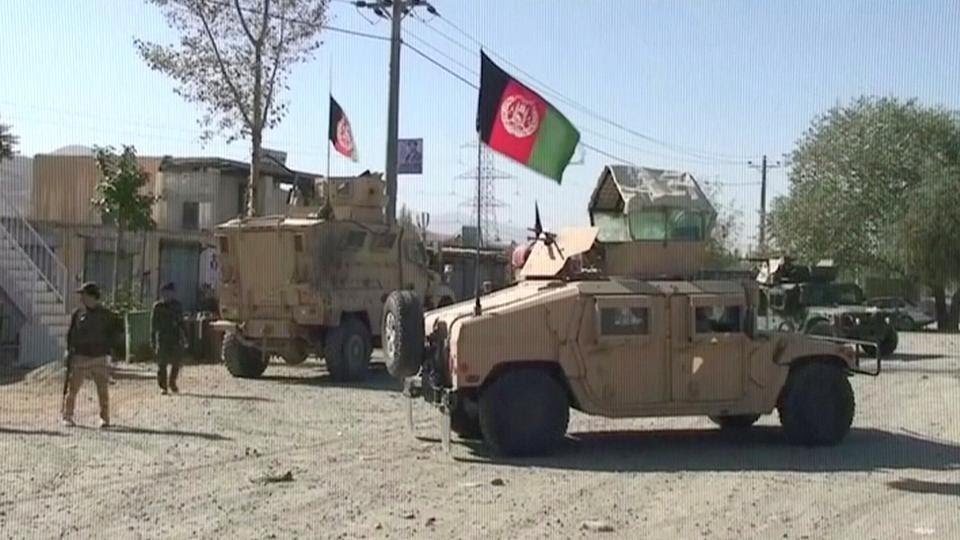
Ever since the emergence of the Taliban in 1996, their capture of power in Kabul and the American and NATO action leading to their overthrow in 2001 in the aftermath of 9/11, India considered them to be major adversaries of the freedom and democratic rights of the people of Afghanistan especially Afghan women. The fact that Pakistan played a key role in raising this extremist religious legion could not remain hidden from the international community.
The Taliban have been engaged in long and bloody battles against the combined foreign troops and the nationalist forces for nearly two decades. They have steadily captured many provinces of Afghanistan and are poised to make a final assault on Kabul at any time.
The Doha peace agreement of 2020 was signed between the Taliban leadership and the American authorities and not between the national government in Kabul and the Taliban. However, the peace agreement stipulated inter-Afghan dialogue for avoiding violence and breaking the political impasse. The Taliban had put forth some conditions for initiating peace talks with the Kabul regime, the most significant of which was the release of thousands of Taliban prisoners captured during the fighting.
The ink on the Doha peace agreement had hardly dried up when the Taliban resumed their fierce attacks on national forces, killing a number of its troops in cold blood. They continued their attacks without relent and seemed to be making rapid progress in “liberating” more and more areas. In the meanwhile, President Biden announced his decision of withdrawing American forces from Afghanistan by September 11, 2021. The withdrawal has begun under a well-considered schedule. Along with the withdrawal of American troops, NATO also decided to withdraw its troops and let the Afghans manage their affairs.
The withdrawal of American and NATO troops from Afghanistan has become an issue of utmost concern to some of the stakeholders who had pinned their hopes on bringing a real democratic and consensual government in Kabul. That has not happened, and the fear is growing that peace may not be achieved in the foreseeable future.
Among the close neighbours, India is profoundly concerned about the impact of American withdrawal and the prospect of the Taliban capturing power. India has made a large investment to the tune of 2 billion US dollars in building infrastructure in Afghanistan. Afghans value and cherish friendship with India because their relations with the country have a long history. However, it is the realm of regional security that has become a cause of anxiety for India, particularly when her borders to the east and west are under great strain. The real threat is not from the Taliban even if they seize power in Kabul; the real threat is from an evil nexus between the Pakistani ISI and Al Qaeda with the latter enjoying clout with the Afghan Taliban.
Contrary to the impression carried in some circles that India is making an experiment and is not serious in engaging the Taliban it should be noted that External Affairs Minister S Jaishankar made three transit halts in Doha, Qatar, during his recent visits to Kuwait and Kenya. During the first halt on June 9, Jaishankar met Qatari National Security Adviser Mohamed Bin Ahmed Al Mesned, shortly before al-Qahtani held separate meetings with US special envoy Zalmay Khalilzad and Taliban negotiators on the same day. During another transit halt on June 15, Jaishankar met Qatari foreign minister Mohammed bin Abdulrahman Al-Thani and Minister of State for Defence Khalid bin Mohammad Al Attiya. He also held talks with US special envoy Khalilzad and exchanged perspectives on Afghanistan and the region. Indian Foreign Minister’s Qatar visits were neither token nor were his meetings with Qatari top leadership just a matter of courtesy. The Indian outreach is largely being led by security officials and has been limited to Taliban factions and leaders perceived as being outside the sphere of influence of Pakistan and Iran.
India can look through the big game likely to unfold in case the Kabul regime collapses. Will the US let that happen is a different question. India cannot take things for granted. The grandiose plan of giving teeth to the Ghazvatul Hind in which ISI would be performing the key role in tandem with Al Qaeda is the security threat we are speaking about.
The announcement of the formation of the Al Qaeda in the Indian Subcontinent (AQIS) was made by Al-Qaeda leader Ayman al-Zawahiri in September 2014. However, the group was not that active, particularly after the establishment of the Islamic State (IS) by the renegade Al-Qaeda Iraqi militia head Abu Bakr al-Baghdadi. The IS announced its expansion to the Khorasan region in 2015, which historically encompasses parts of modern-day Iran, Central Asia, Afghanistan, and Pakistan and parts of India, including Kashmir. The new state was to be named the Islamic State of Khorasan (IS-K).
Some Kashmiri youth were attracted to IS-K and a wing of Kashmir militants calling itself Ansar Ghazavatul Hind was established in the valley. Some of their terrorists were captured by the security forces. However, after al Baghdadi was killed in 2019, IS-K declined in power and influence. In 2018, Antonio Giustozzi, an Italian writer authored a book The Islamic State in Khorasan in which he revealed that the “IS-K was handled by the same ISI (Inter-Services Intelligence) of Pakistan, which was equally friendly with Al Qaeda, that despite the known rivalry between al-Zawahiri and al-Baghdadi, IS-K and Al Qaeda or for that matter AQIS had good ties and that there was a very thin wall of separation between them.”
According to the US intelligence reports, AQIS’s targets are military and security personnel, political parties, foreigners, foreign aid workers, university professors, students, and secular bloggers. In their goal to establish an Islamic caliphate in the Indian subcontinent, many militants in Kashmir do support the broader goals of Al Qaeda’s central leadership.
Yet it is worth noting that the Taliban are underplaying their deep connections with Al Qaeda. In the recent past, a spurt has been observed in the activities of Al Qaeda in parts of Afghanistan. Significantly this surge increased after the signing of the Doha peace agreement. The Taliban have not cut off links with Al Qaeda as was understood while concluding the Doha peace agreement. Outwardly they refrain from mentioning even the name of Al Qaeda but on the contrary, privately they are reported to have pointed out that Al Qaeda is a group of “oppressed Muslim dissidents, forced out of their own countries because of their beliefs”.
The Afghan Air Force claims that last month it killed an Al Qaeda commander known as “Ali Punjabi” and “seven members of the Al Qaeda in the Indian Subcontinent network” in an airstrike. In a separate airstrike in Lashkar Gah, the provincial capital, on May 23, it killed Maulvi Atiqullah, who was described as being “in charge of coordinating terrorist activities with Al Qaeda and the Taliban’s deputy commander for the province”. On May 24, the Afghan military wounded “Haji Ulfat, a key Al Qaeda in the Indian Subcontinent commander” and killed four fighters in a strike “in the Popalzo area of Khanshin district.” Several “hideouts of the Al Qaeda terrorist network” were also targeted, the Afghan Ministry of Defence (MoD) claimed.
Some other studies show that the Al Qaeda cadres are present in other parts of Afghanistan as well. In March 2019, even the United Nations Security Council had identified Al Qaeda to be operating in 13 of Afghanistan’s 34 provinces.
In addition, the group retains an active relationship with groups across Africa, the Middle East, and Asia such as Ahrar al-Sham in Syria, the Taliban and Haqqani Network in Afghanistan, Tehreek-e-Taliban Pakistan in Pakistan, and Jamaat Nusrat al-Islam wal Muslimeen in the Maghreb and West Africa. In both the Horn of Africa and the Sahel, Al Qaeda-linked militants have strengthened their ties with the group’s central leadership.
In the final analysis, the Afghan Taliban have not severed relations with Al Qaeda rather made them more solid. The Taliban and Al Qaeda combine is waiting for the total withdrawal of the American/NATO forces in August. As the Taliban have mounted pressure on the State forces, there are chances for them to be once again in the seat of power in Afghanistan and carry forward thes agenda of radicalizing the entire Afghan society. This all seems to go in favour of Pakistan who imagines it will play a crucial role in Afghanistan under the control of the Taliban. The end goal is the Islamization of the entire Indian Subcontinent which includes Kashmir and heads towards the rise of an Islamic Caliphate in the entire region.
These are the security apprehensions looming in the planning of Indian defence strategists. Pakistan’s ISI is engaged at the planning level in this geostrategic plot and finds a handle in Al Qaeda and Taliban combine reinforced by the trained terrorist suicide bombers of Pakistan-based terrorist organizations. Whether India will be able to mollify the more nationalist elements among the Taliban by conducting secret talks with their leadership is a moot point.






Add comment